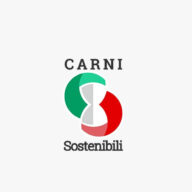
ASF: intensive farming, guarantee of safety
The recent advance of the African Swine Fever (ASF) has alarmed Italian swine farms, which are a protective barrier to spreading the virus.
The recent advance of the African Swine Fever (ASF) has alarmed Italian swine farms for its impact on animal health and severe socio-economic consequences. By the way, it is necessary to explain well what it is, to resolve doubts and fears, often unfounded, of the consumers. Giuseppe Pulina, Professor of Special Zootechnics at the University of Sassari, President of Carni Sostenibili and among the most authoritative scientists globally, has clarified the subject of the microphones of Radio Cusano.
First of all, what is African Swine Fever, and why is it so scary? “African Swine Fever differs from Classical Swine Fever, which we have known for many years, and we are already very far ahead in prevention. Unfortunately, ASF does not have a vaccine, so we cannot vaccinate animals to prevent their spread”. Therefore, as Professor Pulina explains, the lack of a vaccine is the main reason a possible epidemic of ASF on the national territory would have severe repercussions on the swine population. This would cause considerable damage to both animal health and the entire production sector.
“It is a highly contagious viral disease transmissible only between animals, which causes fever and then the death of animals. However, it is not transmitted to humans in any way, neither approaching the animals, nor consuming products that this virus might have infected”, Pulina points out, reassuring the consumers listening: “It is a virus circulating on the planet like billions of other viruses which we live with, but which affects the swine, even the wild one like the wild boar, being the same species”.
Where does this virus come from? “The serotype found in Sardinia is different from that of Piedmont. The Sardinian situation is now under complete control. We no longer have had viral circulation for almost three years. We are very close to the epidemiological silence. The virus comes from Eastern Europe. It has expanded from 2007 to 2008 in the sub-Caucasian regions. Then it went north, took all of Eastern Europe. It arrived in Poland, cases were found in Germany, then in Belgium and exploded in a disruptive way in China, where it forced the Chinese to suppress hundreds of millions of heads of pigs to circumscribe it”.
The #AfricanSwineFever is a contagious #ViralDisease transmissible only between #animals, which causes fever and then their death. It is not transmitted to #humans in any way. Click To TweetBut can intensive farming facilitate its spread? “No, indeed the opposite”, Professor Pulina emphasizes: “Paradoxically, the fact of keeping animals confined gives very high levels of safety. On the contrary, the animals in the open air are the most exposed to this disease, especially if they do not have active defences, double fences and constant serological control. On the other hand, animals on the farm have such high safety levels that, if the disease were to enter the farm, it would be known immediately. So, the farm would be immediately considered an outbreak, with the quick intervention of the health authorities“.
Indeed, intensive farming is a protective barrier to the spread of the virus, with animals being confined and controlled, with the highest biosecurity levels. The health authorities then have stringent protocols at the world level and decide whether to proceed with the slaughter of the animals.
Farmers have now recognized that well-being is the first element of product quality, and it is in their interest to ensure it. “In many farms, they are rebuilding the pigsties all over again to make them more comfortable”, Pulina says: “They enrich the environments with accessories for pigs’ entertainment and do everything to increase animal welfare“.
Suppose consumers of pork meat can feel safe. In that case, a little more attention should instead be paid to wild boar meat: “The Ministry imposes a stringent surveillance on hunting and wild Suidae hunted, which must be delivered to institutions, such as the Zooprophylactic Institutes that immediately verify whether or not that meat can be used”, Pulina clarifies: “This also applies to the industry, as there is active and passive surveillance by the farms. Thanks to these, the industry receives guaranteed products that have never had contact with infected animals”.
#IntensiveFarming is a protective barrier to the spread of #AfricanSwineFever. Animals are confined and controlled, and therefore with the highest #biosecurity levels. Click To TweetWhy then was there a stop to hunting in Liguria and Lombardy, also banning other activities such as trekking, mountain biking, mushroom picking and mountain walks? What are the dangers?
“It is an aspect that concerns the extreme contagiousness of the virus, which is also conveyed by shoes or clothing”, the Professor explains: “Anyone who walks in contact with residues emitted by an infected animal can take it with him unknowingly. Then if he comes into contact with a swine farmer, this can bring it into the farm. In addition, there is also the possibility of spreading the virus in the wild, getting in touch with other wild Suidae and thus propagate the virus in the environment”.
One hope comes from the research: “African wild Suidae has developed a specific resistance,” the Professor explains: “For example, warthogs are resistant. There is a line of international research to use the warthog gene, which is a gene that belongs to the same genus, the Suidae, using domestic lines to make them resistant to this virus. We are ahead in the genomics research, which will be a solution”.





